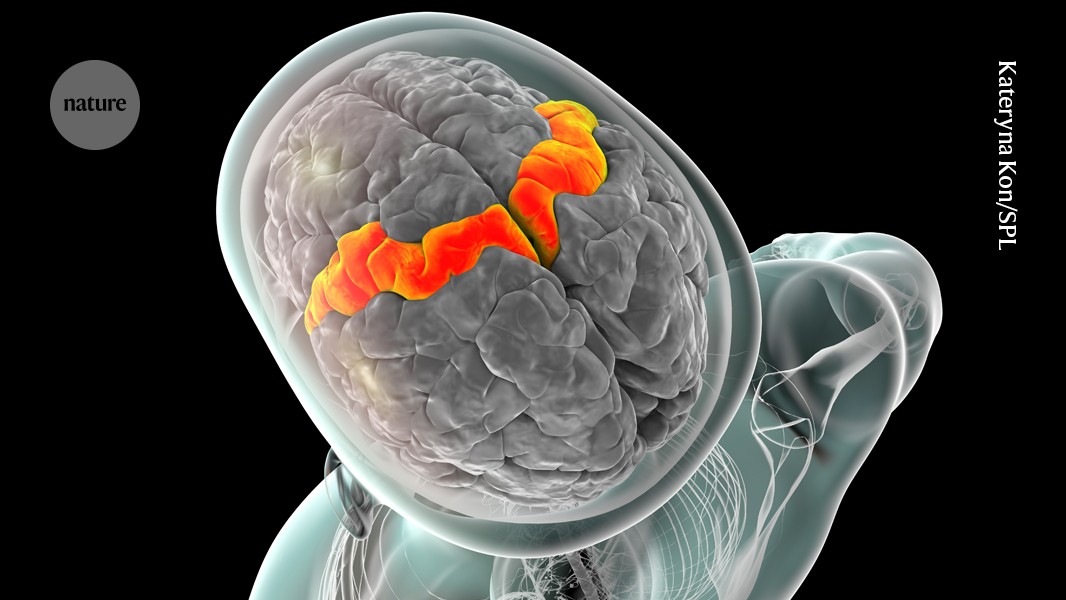World first: brain implant lets man speak with expression ― and sing

Device translates thought to speech in real time

The motor cortex (orange, illustration). Electrodes implanted in this region helped to record the speech-related brain activity of a man who could not speak intelligibly. Credit: Kateryna Kon/Science Photo Library
A man with a severe speech disability is able to speak expressively and sing using a brain implant that translates his neural activity into words almost instantly. The device conveys changes of tone when he asks questions, emphasizes the words of his choice and allows him to hum a string of notes in three pitches.
The system — known as a brain–computer interface (BCI) — used artificial intelligence (AI) to decode the participant’s electrical brain activity as he attempted to speak. The device is the first to reproduce not only a person’s intended words but also features of natural speech such as tone, pitch and emphasis, which help to express meaning and emotion.
In a study, a synthetic voice that mimicked the participant’s own spoke his words within 10 milliseconds of the neural activity that signalled his intention to speak. The system, described today in Nature1, marks a significant improvement over earlier BCI models, which streamed speech within three seconds or produced it only after users finished miming an entire sentence.
“This is the holy grail in speech BCIs,” says Christian Herff, a computational neuroscientist at Maastricht University, the Netherlands, who was not involved in the study. “This is now real, spontaneous, continuous speech.”
Real-time decoder
The study participant, a 45-year-old man, lost his ability to speak clearly after developing amyotrophic lateral sclerosis, a form of motor neuron disease, which damages the nerves that control muscle movements, including those needed for speech. Although he could still make sounds and mouth words, his speech was slow and unclear.
Five years after his symptoms began, the participant underwent surgery to insert 256 silicon electrodes, each 1.5-mm long, in a brain region that controls movement. Study co-author Maitreyee Wairagkar, a neuroscientist at the University of California, Davis, and her colleagues trained deep-learning algorithms to capture the signals in his brain every 10 milliseconds. Their system decodes, in real time, the sounds the man attempts to produce rather than his intended words or the constituent phonemes — the subunits of speech that form spoken words.
“We don’t always use words to communicate what we want. We have interjections. We have other expressive vocalizations that are not in the vocabulary,” explains Wairagkar. “In order to do that, we have adopted this approach, which is completely unrestricted.”
The team also personalized the synthetic voice to sound like the man’s own, by training AI algorithms on recordings of interviews he had done before the onset of his disease.
Enjoying our latest content?
Login or create an account to continue
- Access the most recent journalism from Nature's award-winning team
- Explore the latest features & opinion covering groundbreaking research
or
Sign in or create an accountdoi: https://doi.org/10.1038/d41586-025-01818-1
This story originally appeared on: Nature - Author:Miryam Naddaf

















